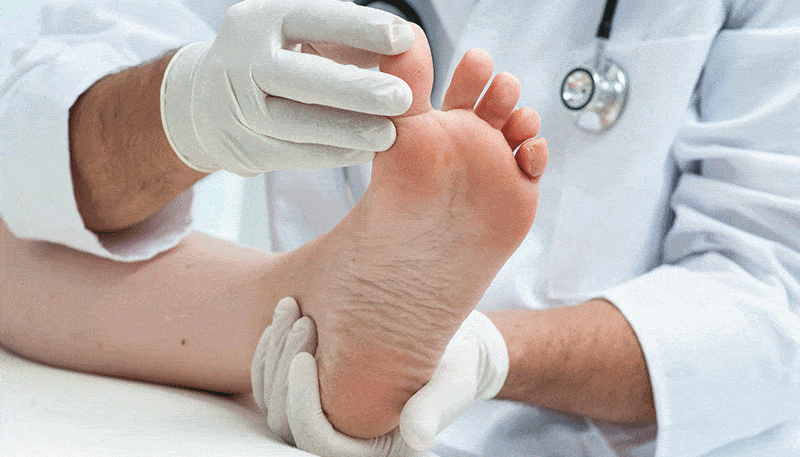If you are thinking about what is Aortic dissection? or never heard of this medical condition before, then the information given in this post would help you know this condition better.
An aortic dissection is one of the serious medical conditions wherein the inner layer present in the Aorta which is the large blood vessel that arises from the heart actually tears off. Due to the tear, the blood leaks through it resulting in the dissection of the middle and inner Aorta layers.

In case the channel filled with blood gets damaged via the outside Aortic wall, the dissection of aorta can be life threatening too.
Well, Aortic dissection is not so common and mostly occurs in men in age group of 60-70s. As the symptoms of Aortic dissection are quite similar to some other diseases, it may take longer time to get detected.
Just like any other severe disease, early diagnosis of Aortic dissection increases the chances of survival in patients.
What are the expected symptoms?
The symptoms observed in Aortic dissection can be same as those of heart problems like heart attack. Some of the common symptoms noticed are
- Sudden abdominal pain that can get severe
- Sudden chest/ upper back pain(severe), it can be best explained as ripping, tearing, sensation of shearing
- Unconsciousness
- Breathlessness
- Problems with speaking (all of a sudden), vision loss, paralysis in either side of the body as that of a stroke or weakness.
- Weak pulse especially in one arm/thigh as compared to the other one
- Pain in Legs
- Issues with walking
- Leg paralysis
What could be the causes?
Aortic dissection occurs when aortic wall weakens and this weakening of Aortic wall can be as a result of high blood pressure. In some people a weak Aorta can also be by birth and gradually it results in decreasing the strength/size of the aorta. Marfan syndrome is one such example. In very rare cases, the condition can also occur due to traumatic chest injury in an accident etc.
Types of Aorta
Aortic dissections are of 2 types and the difference depends on their location.
Type A this is most common out of the 2 types and is also dangerous than the other one. Here, the tear occurs in ascending or upper aorta and can spread up to your abdomen or up till the area where the aorta originates from your heart.
Type B In this case, the descending or lower aorta tears and it can also reach your abdomen.
Appointment
Aortic dissections occur mainly in men between age group of 60-80 and men have double the chances of developing this condition in comparison to women. Some of other conditions that can result in an aortic dissection are
- Uncontrolled Hypertension or High blood pressure
- Atherosclerosis or Hardening of arteries
- A valve having 2 leaflets (bicuspid aortic valve)
- An existing weakened artery
- Narrowed aorta at birth known as aortic coarctation
- Smoking
Some of the genetic diseases can also contribute to an aortic dissection like
- Marfan syndrome
- Connective tissue disorders like Ehlers-Danlos syndrome & Loeys-Dietz syndrome
- Turner’s syndrome
- Syphilis and giant cell Arteritis
Apart from the above diseases, use of cocaine or indulging in weightlifting (high intensity) can also result in aortic dissection.
As the symptoms of an aortic dissection are similar to many other health issues, it becomes little tricky to detect this condition. Sometimes symptoms and signs as mentioned below can also be suspected as the symptoms of aortic dissection
- Widening of aorta detected in chest X-ray
- Sudden ripping pain in chest
- Difference in blood pressure between the right & left arms
Well, the above symptoms may indicate the chances of aortic dissection a proper imaging diagnosis is required to confirm the condition. The Imaging techniques used to diagnose aortic dissection are
CT scan CT scanning produces X-rays to get the images (cross-sectional) of your body. The CT scan helps to scan your chest to check for the possibility of an aortic dissection with the help of contrast liquid injected. Contrast generates a clearer picture of the heart and aorta in CT scanning.
MRA (Magnetic resonance angiogram)
An MRI makes use of a magnetic field plus radio wave energy pulses to generate images of your body. This technique is used by MRA to check the blood vessels.
Treatment
Treatment for aortic dissection is based on where the tear is located.
Aortic dissection needs immediate medical attention and treatment. The treatment procedures may include medications, surgery etc based on the aorta location.

Type A – Aortic Dissection
Type A aortic dissection is found near the heart and hence can be fatal. It needs surgery on urgent basis to replace/repair the ascending aorta from where the tear starts. The chances of patient dying during this urgent surgery is nearly 10-20% based on the patient’s health condition when hospitalized.
Type B – Aortic Dissection
Type B – Aortic dissection is positioned little downward to the aorta (descending aorta), away from the heart. In such cases the surgery may not be required initially, but medications or treatment is required to manage blood pressure levels. In such cases the patients’ blood pressure is controlled with the help of intravenous blood pressure medicines and frequent checks.The surgery may be postponed for a couple of months or years based on how severe the tear is. In exceptional cases where the tear leaks and blood starts flowing to the crucial organs like intestines, kidneys, spinal cord or legs similar to that of type A aortic dissection then it needs surgery on urgent basis to avoid life threatening complications.
Surgery & Endovascular Treatment
The severity of aorta decides whether it needs a repair or an open surgery. In open heart surgery the aorta is substituted with graft which is a fabric tube which is stitched to replace affected aorta. Also, one of the Best Vascular Surgeon in India, Dr Ravul Jindal may make use of these graft stents that are sent – ‘endovascularly’ means they are positioned over the wire via a small incision present in groin and then sent upstream inside aorta and then slowly installed thereby releasing the graft stents just like the spring.
Yet another preferred and best Aortic Dissection Treatment in India, to treat patients suffering from aortic dissections is – hybrid procedure. This treatment merges open surgery and endovascular stent graft methods.
The most common hybrid procedures is known as – “elephant trunk” and this process is an open operation carried out to repair affected aorta located near to the heart and also aortic arch – the section of aorta from where the blood supply to your brains starts.
Medications
In some cases when the aorta dissection is not severe, doctors prescribe medications like beta blockers to reduce the blood pressure and heart rate. Some other medications are also used to manage aorta dissection.
As a part of precaution in aortic dissection, doctors help patients become aware of the symptoms and get diagnosed at early stage so that the right treatment can be provided to the patient.

